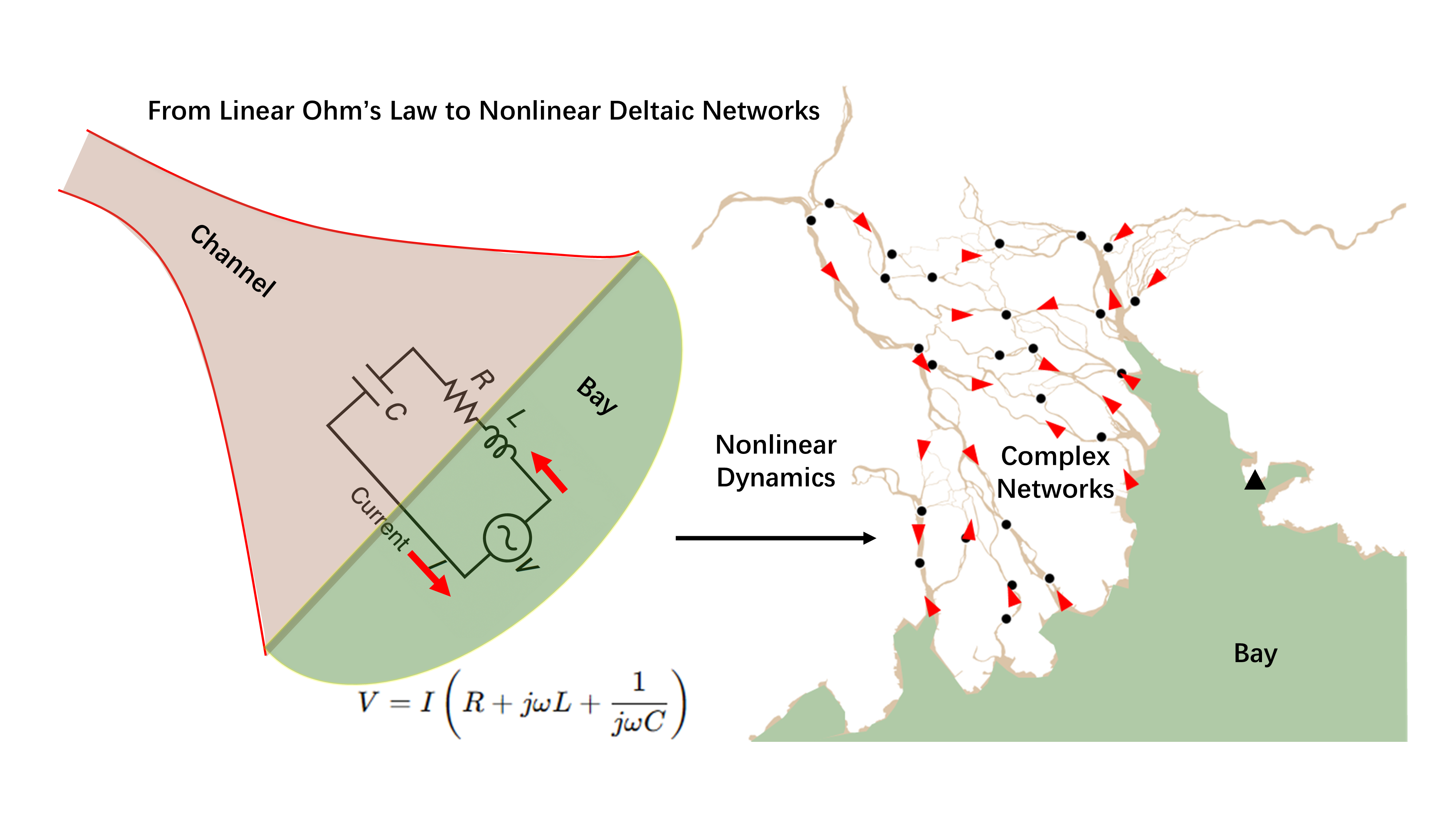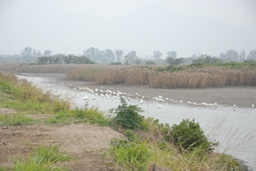Tracing resilience propagation in river deltas
Published in Earth & Environment

In dynamic world of river deltas, tides and river flows interact in intricate, often unexpected ways. Our recent study, published in Communications Earth & Environment (https://doi.org/10.1038/s43247-025-02519-3), was sparked by a deceptively simple yet profound question: How does the resilience of water levels in deltaic systems propagate through interconnected river networks under the pressures of climate change and human interventions? This inquiry led us from the foundations of classical tidal theory to the cutting edge of nonlinear dynamics and resilience science.
From Ohm’s Law to Deltaic Networks
Central to our approach is a striking analogy: tidal channels behave much like electrical circuits. Here, tidal forcing serves as a voltage source, channel flow mirrors electrical current, and impedance reflects frictional and geometric constraints. This concept is vividly captured in the left panel of Figure 1, where a single-channel tidal system linked to a bay is modeled as a classic RLC electrical circuit. Building on our prior work, this analytical framework leverages Helmholtz resonance and system response theory to unravel the complex interplay of tides, flow, and channel morphology. Real-world deltas, however, are far more intricate than single-channel systems. They form vast, braided, and hierarchical networks, what we call “hydrodynamic graphs”. These networks resemble coupled circuits, with branches arranged in series and parallel configurations. Each connection shapes how resilience (defined as the system’s capacity to recover from disturbances) either propagates or falters. In the Pearl River Delta, for example, rapid urbanization, dredging, and channelization since the 1990s have profoundly reshaped the system’s impedance structure, altering its dynamic behavior.

Figure 1. From linear tidal theory to nonlinear deltaic network dynamics. A single-channel tidal system is analogized to an RLC electrical circuit, where tidal forcing is represented as voltage (V), channel flow as current (I), and impedance includes resistance (R), inductance (L), and capacitance (C).
Why It Matters?
Water level resilience is a subtle yet critical measure of a delta’s health. A decline in resilience can serve as an early warning of impending regime shifts, such as heightened flooding or sediment depletion, often before overt changes emerge. By integrating autocorrelation-based resilience estimation with a high-dimensional vine Copula model, we developed a method that not only identifies where resilience is eroding but also traces how this loss propagates spatially across a deltaic network. Our findings uncovered surprising patterns of resilience transmission. For instance, resilient upstream subsystems could either mitigate or intensify stress propagation to downstream nodes, depending on their configuration. In series-like connections, resilience loss spread linearly, cascading through the system. In contrast, parallel configurations exhibited more complex, buffered dissipation. These dynamics align closely with predictions from tidal impedance models, underscoring the nonlinear and often unpredictable nature of deltaic responses.
Surprising Insights and Future Implications
A striking revelation from our research was the remarkable alignment between the spatial propagation of resilience and the physical principles rooted in classical tidal theory. Despite the complexities introduced by human activities, the core dynamics of deltas remain governed by geometric and frictional controls, which can be elucidated through elegant yet robust models. This synergy between hydrodynamic theory and resilience science unlocks transformative opportunities. Our approach is not merely diagnostic but also predictive, offering a versatile tool for deltas worldwide. It enables the detection of early-warning signals, informs sustainable engineering solutions, and supports the development of adaptive management strategies that harmonize natural variability with human impacts.
Looking Ahead
Looking forward, we envision transformative potential in combining our approach with real-time monitoring, remote sensing, and machine learning to create a next-generation early-warning system for deltas. In an age of rapid environmental change, the capacity to predict resilience loss and trace its propagation, is not only scientifically compelling but also vital for safeguarding the communities, ecosystems, and economies that rely on the world’s deltas.
Follow the Topic
-
Communications Earth & Environment

An open access journal from Nature Portfolio that publishes high-quality research, reviews and commentary in the Earth, environmental and planetary sciences.
Related Collections
With Collections, you can get published faster and increase your visibility.
Geology of the Moon
Publishing Model: Hybrid
Deadline: Jan 31, 2026
Drought
Publishing Model: Hybrid
Deadline: Dec 31, 2025





Please sign in or register for FREE
If you are a registered user on Research Communities by Springer Nature, please sign in